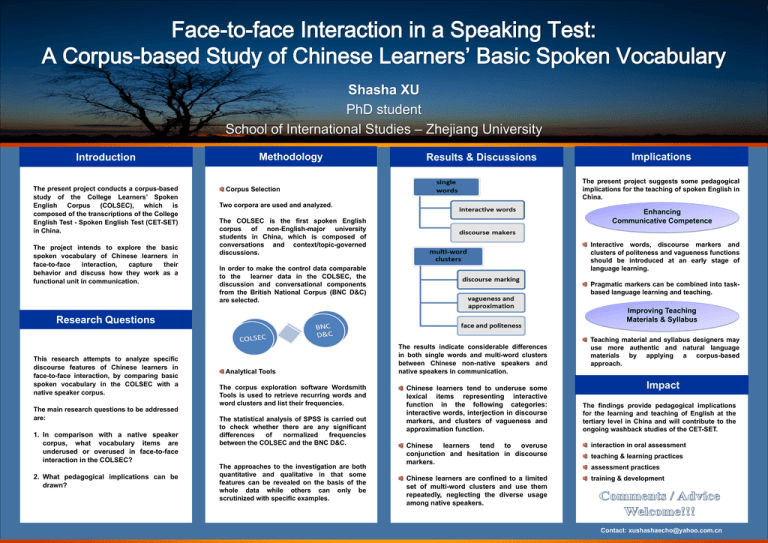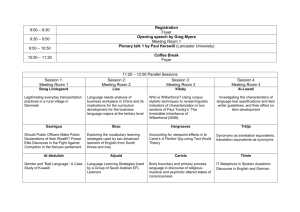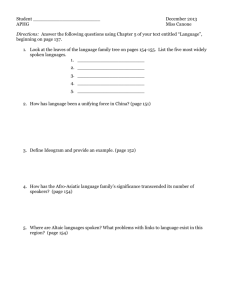Face-to-face Interaction in a Speaking Test:
advertisement

Face-to-face Interaction in a Speaking Test: A Corpus-based Study of Chinese Learners’ Basic Spoken Vocabulary Shasha XU PhD student School of International Studies – Zhejiang University Introduction The present project conducts a corpus-based study of the College Learners’ Spoken English Corpus (COLSEC), which is composed of the transcriptions of the College English Test - Spoken English Test (CET-SET) in China. The project intends to explore the basic spoken vocabulary of Chinese learners in face-to-face interaction, capture their behavior and discuss how they work as a functional unit in communication. Methodology Results & Discussions The present project suggests some pedagogical implications for the teaching of spoken English in China. Corpus Selection Two corpora are used and analyzed. Enhancing Communicative Competence The COLSEC is the first spoken English corpus of non-English-major university students in China, which is composed of conversations and context/topic-governed discussions. Interactive words, discourse markers and clusters of politeness and vagueness functions should be introduced at an early stage of language learning. In order to make the control data comparable to the learner data in the COLSEC, the discussion and conversational components from the British National Corpus (BNC D&C) are selected. Pragmatic markers can be combined into taskbased language learning and teaching. Improving Teaching Materials & Syllabus Research Questions This research attempts to analyze specific discourse features of Chinese learners in face-to-face interaction, by comparing basic spoken vocabulary in the COLSEC with a native speaker corpus. The main research questions to be addressed are: 1. In comparison with a native speaker corpus, what vocabulary items are underused or overused in face-to-face interaction in the COLSEC? 2. What pedagogical implications can be drawn? Implications Analytical Tools The corpus exploration software Wordsmith Tools is used to retrieve recurring words and word clusters and list their frequencies. The statistical analysis of SPSS is carried out to check whether there are any significant differences of normalized frequencies between the COLSEC and the BNC D&C. The approaches to the investigation are both quantitative and qualitative in that some features can be revealed on the basis of the whole data while others can only be scrutinized with specific examples. The results indicate considerable differences in both single words and multi-word clusters between Chinese non-native speakers and native speakers in communication. Chinese learners tend to underuse some lexical items representing interactive function in the following categories: interactive words, interjection in discourse markers, and clusters of vagueness and approximation function. Teaching material and syllabus designers may use more authentic and natural language materials by applying a corpus-based approach. Impact The findings provide pedagogical implications for the learning and teaching of English at the tertiary level in China and will contribute to the ongoing washback studies of the CET-SET. Chinese learners tend to overuse conjunction and hesitation in discourse markers. interaction in oral assessment Chinese learners are confined to a limited set of multi-word clusters and use them repeatedly, neglecting the diverse usage among native speakers. training & development teaching & learning practices assessment practices Contact: xushashaecho@yahoo.com.cn




